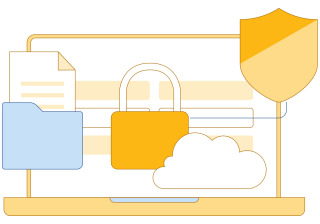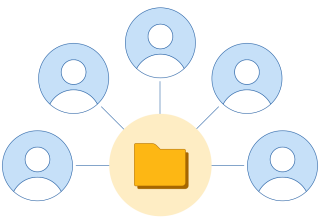In the complex tapestry of cybersecurity and privacy laws, organizations are at different levels of maturity for compliance.
Organizations need a unified platform to respond to client audits and address the demands associated with legislative and regulatory requirements like
GDPR, NIS, California Consumer Privacy Act, New York SHIELD Act, and others.
Negligence Means Liability
To comply with data privacy and compliance laws and regulations, organizations must develop and apply clear policies for service deliveries involving personal data. The legal standard for data breach liability is often mere negligence.
Privacy Management for Content Systems
Enable Privacy by Design through User Adoption
Firms need to design and implement processes and systems that can manage personal data and provide audit/reporting assurances that data is in the right place. This starts with designing metadata and folder structures that enable documents to be uniformly grouped and easily located across all content systems. These processes improve user adoption of content systems.
Create core folder and document structure for workspaces and documents
Enable workspace and folder changes and updates across content systems
Adjust workspace structure to improve usage
Implement Need-to-Know Security
Given the highly sensitive nature of their work, firms are moving towards adopting role-based security and permissions that provide access to only those that need to know. This allows client data to be restricted to only those people who are directly working on any given engagement and have been authorized by the client. Need to know security policies enhance security but also require technology and personnel to administrate the policy across content systems.
Provision and de-provision workspaces and documents for security across content systems
Limit access and editing rights to only those that need to know
Control permissions provided to administrators and service desk professionals
Implement Data Mapping Capabilities
To comply with various privacy and cybersecurity regulations, firms need to know what data they have, where it is stored, and who has access to it. This creates the need for data mapping capabilities.
Track key profile information about matters
Track the location of matter workspaces across content systems
Track key matter metadata to identify persons
Track people who need access to data
Streamline Subject Access Requests Responses
As privacy regulations continue to increase, organizations must be able to effectively and efficiently respond to subject access requests. Subject access requests give individuals the right to obtain a copy of their personal data and other supplementary information. These requests need to be resolved in a complete and timely manner.
Track matter data to determine what content needs to be provided to the requester
Provide content in a timely manner (latest one month from official request)
Locate data across content systems to provide complete data to the requester
Provide Assurance through Analytics
Firms need to have processes in place to prove that they are following policies. This can be done through analytics and reporting on user access and changes to data.
Create report schedules and automate assurance processes
Configurable dashboards to monitor activities
Provide audit reports on source systems and compliance with data minimization policies
Readiness for Business Continuity Incidents
Essential and regulated industries (e.g., health, financial services, energy, etc.) are often required to have business continuity plans in place for their operations and their vendors’ operations. As a result, law firms are often required by their clients to implement business continuity plans.
- Securely store document in the firm’s AWS S3 account
- Enable access through a one-time password
- Search for documents through profile searches and download document
- Check-in documents when systems return online
Understanding the Impact of Privacy and Cybersecurity.
One Solution for All Your Concerns
CAM Addresses the Privacy Challenge around Content
CAM enables organizations to have a holistic and organization-wide information governance plan to comply with current and upcoming privacy laws and regulations. It allows organizations to locate their data, understand it, and ensure data access, security, and management to comply with privacy regulations and the organization’s business needs.
Technology to Orchestrate, Manage, and Govern Content Systems
In the Cloud and On-Premises
Orchestration
User Adoption
Management
Governance
Start Managing Content Systems in the Cloud with CAM
Enabling consistent information governance and full-matter lifecycle management









